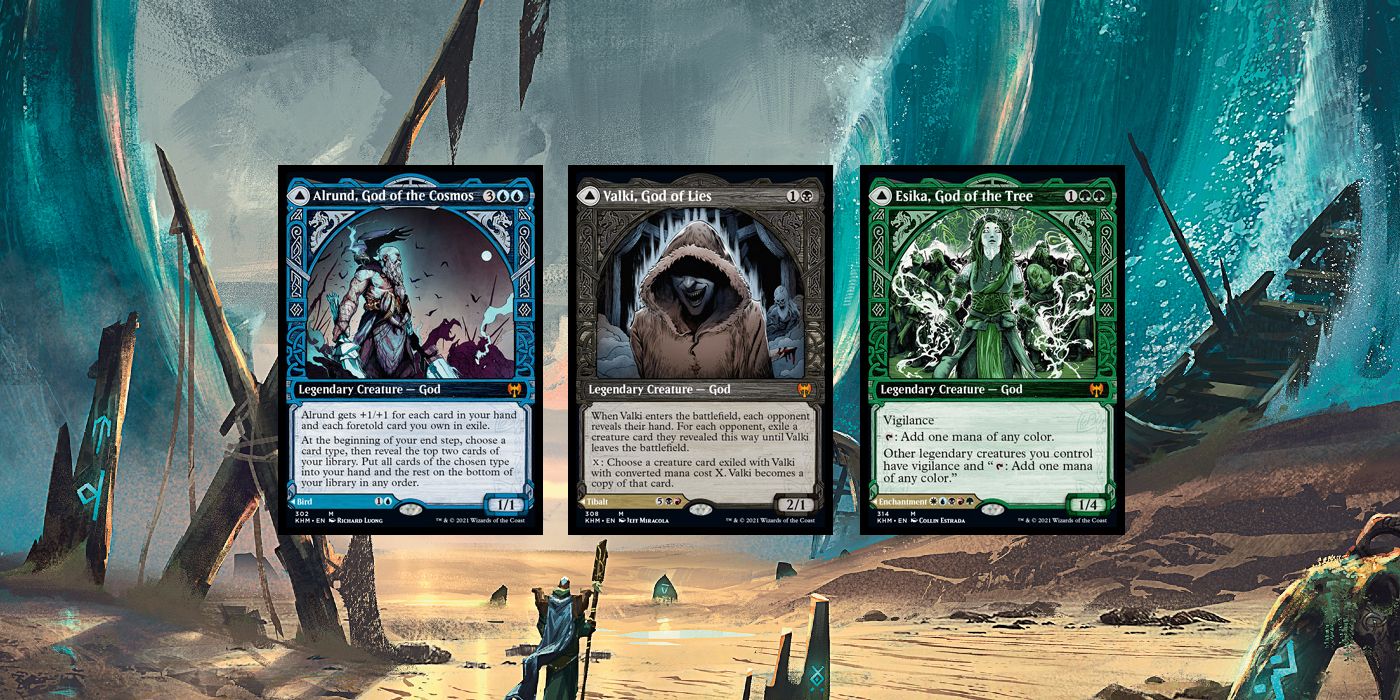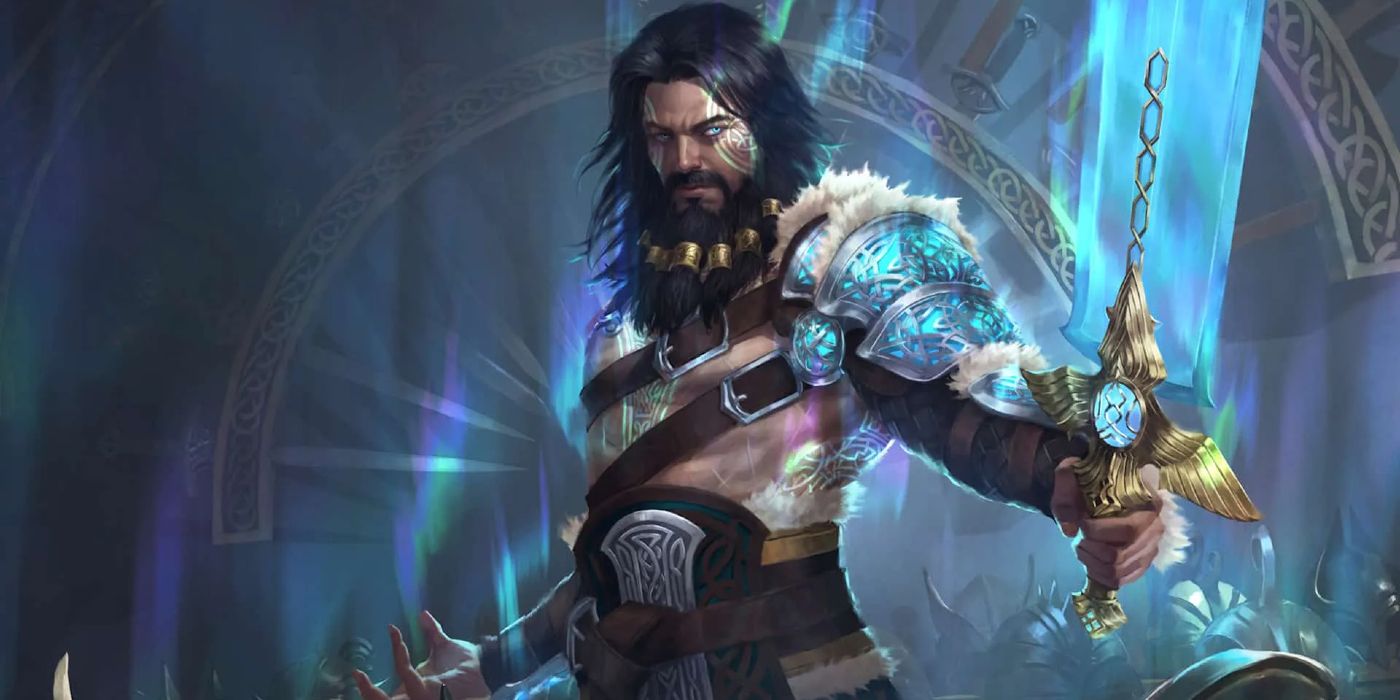The world of Magic: The Gathering is no stranger to deities, but Kaldheim looks like it gets MTG gods right in a way that other sets didn't manage to capture for themselves. For those unfamiliar, god cards in Magic: The Gathering are an actual subtype for creatures rather than slang to refer to over-powered printings, and the game has seen plenty of them. Theros is perhaps the most memorable set to feature gods because it was centered around them and was the first MTG set to introduce the creature type god to the game, but subsequent sets like Amonkhet and even War of the Spark have also featured designs of deities with god typing.
It's hard to say that many of the MTG gods that have been printed are disappointing - some, like Thassa and Hazoret, have been the centerpieces of dominant strategies, while others, like Karametra, have become staples of the Commander scene. Throughout all of their iterations, though, the gods in Magic: The Gathering have all tried to capture the same kind of feeling: a powerful being, with abilities that outstrip other creatures (without, hopefully, being too strong in actual gameplay) that also feels integral to the world it is located within. The first part has come fairly easily, but the second has often felt secondary, difficult to fully integrate into such a tricky design.
That's what makes the Kaldheim gods so exciting: They feel like the first design of god creatures that fully "get" the world they're located in, showing off their abilities in intriguing ways that embrace the inspirations they're based on. While the Kaldheim MTG god design certainly won't be for everyone, it's a bold direction that's simultaneously made them feel immensely important while maintaining a degree of flexibility other iterations didn't really have.
Why MTG's Kaldheim Gods Are So Exciting
The most exciting part of Magic: The Gathering Kaldheim's gods is their double-faced card design, which has given them a level of flexibility and lore integration that hasn't been seen in the other sets featuring gods. While Theros had devotion, which married the belief players had in their respective gods to their usefulness on the battlefield, Kaldheim takes it a step further by offering up two different interpretations of each god: their actual bodies, and then something that's tied to them and their powers. Belief in gods can take more than one form in Kaldheim and, crucially, the gods of the plane are so powerful they can affect the game in different ways depending on the situation. That gives the Kaldheim gods more chances to be impactful in gameplay, which in turn makes their characters feel that much more like deities within the context of Magic: The Gathering play.
They're also exciting because most of them don't require MTG players to commit to one side forever. When Kaldheim gods are in their non-god forms, they often have effects that allow them to return to their owner's hand after achieving something in play, meaning they can shift between forms as the game progresses. They're also just major flavor wins, with many of them embodying the Norse mythology that inspired them in captivating ways. The Kaldheim gods even managed to bring Tibalt back and make him a major player in the Magic: The Gathering set's narrative - no small feat for the perennial underdog mischief maker.


